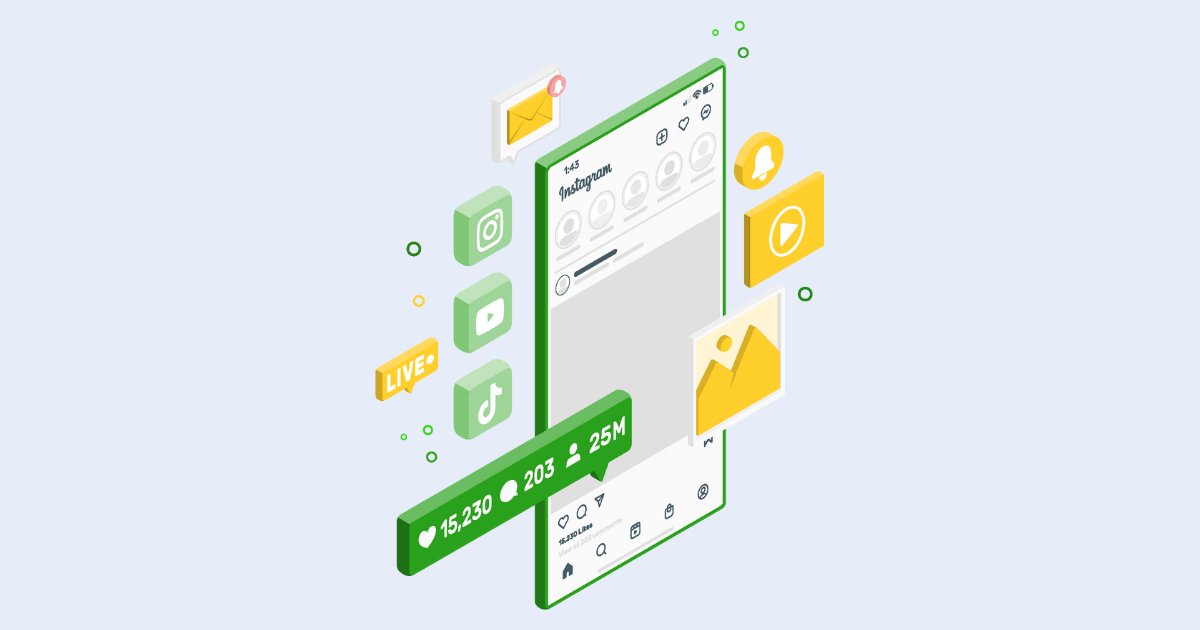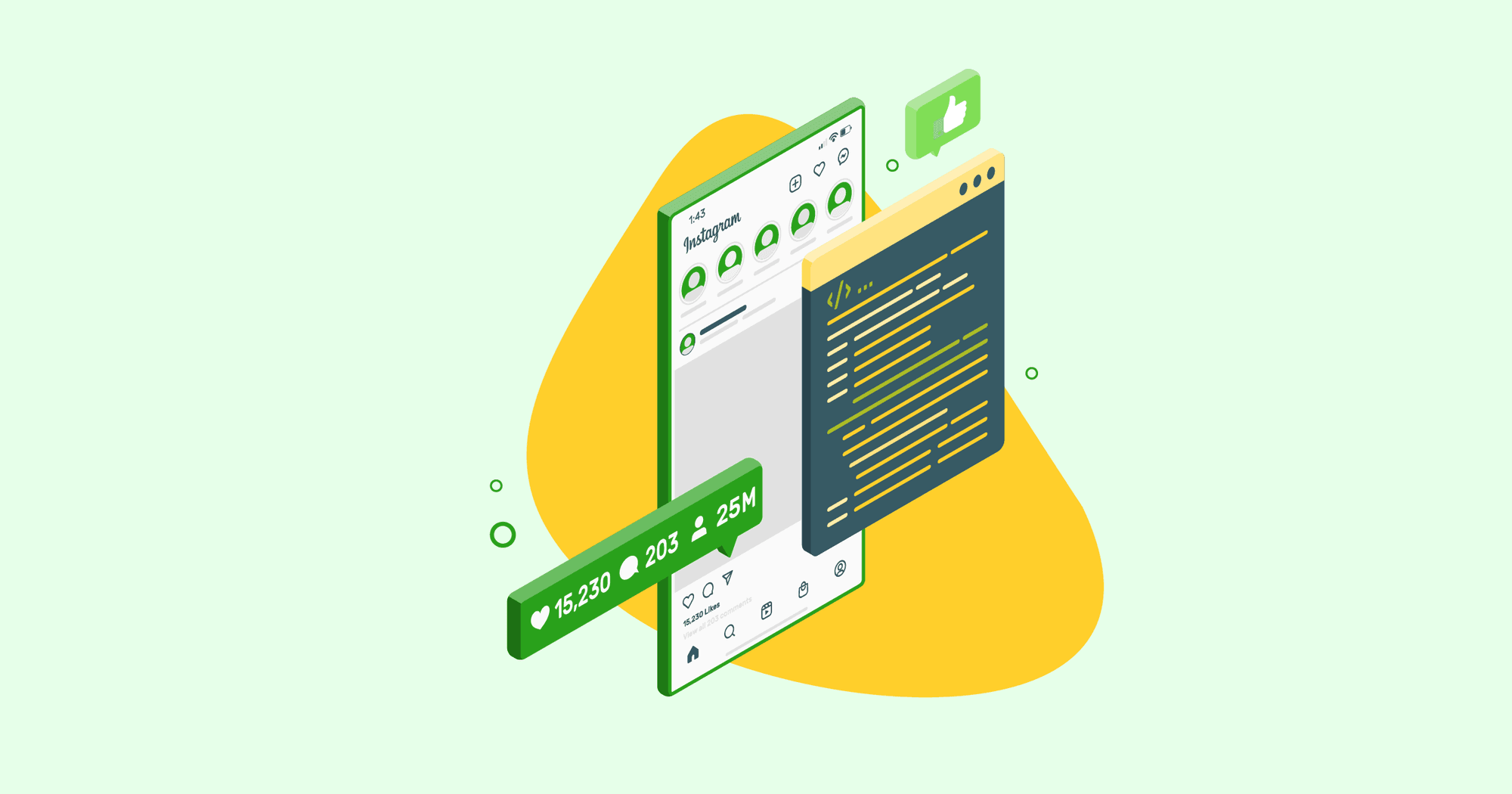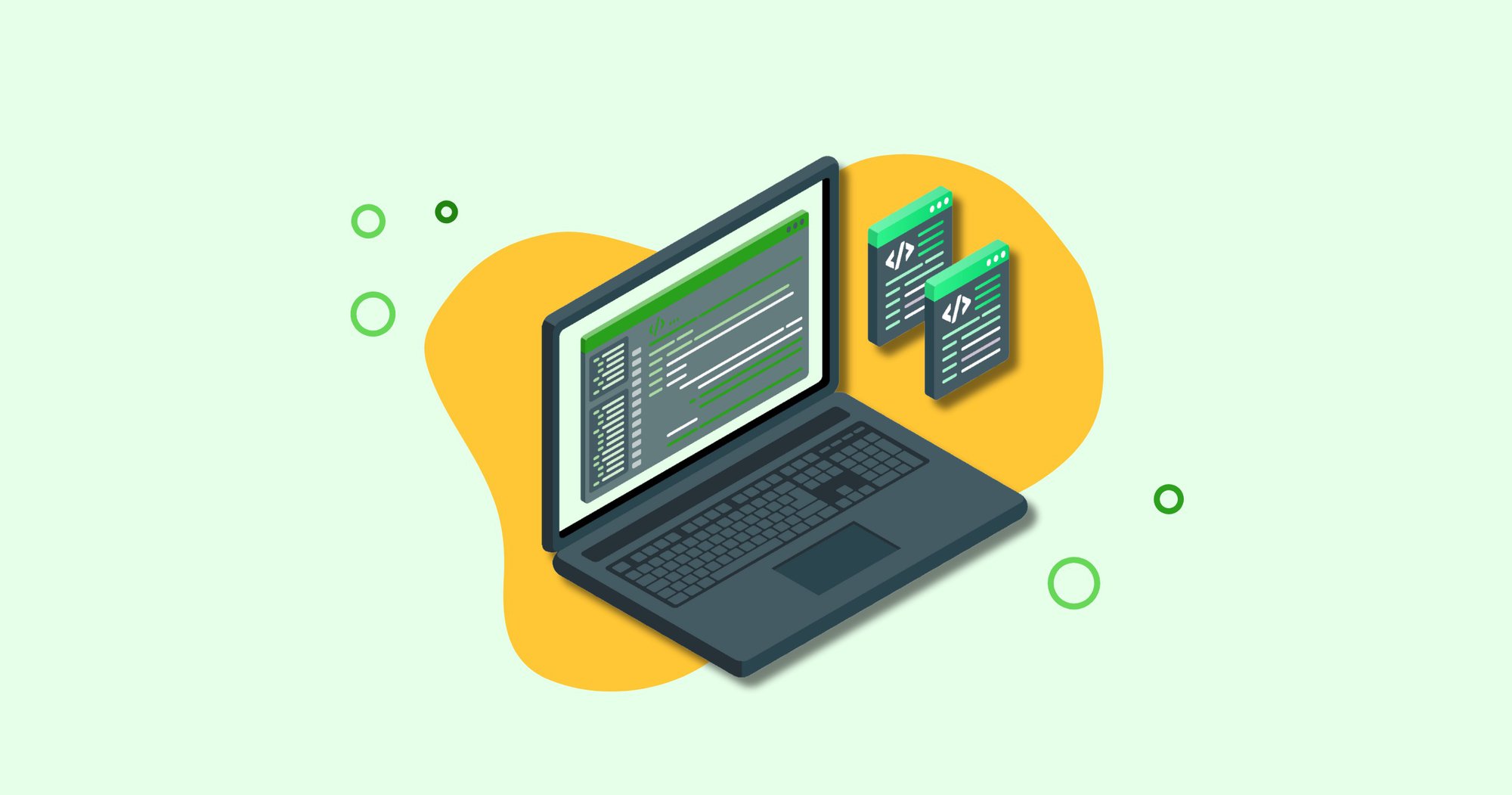Social Media is a vital source of traffic to your websites, landing pages, and offers. With over 4.62 billion people using social media actively in 2022 and more people joining the platforms, the importance of social media as a traffic source can’t be ignored.
But, how do you understand whether or not your social media campaigns are working?
In this article, we’ll talk about some of the lesser-known technical social media optimizations you need to keep in mind in order to attribute traffic correctly, understand your users better and increase your overall content shares.
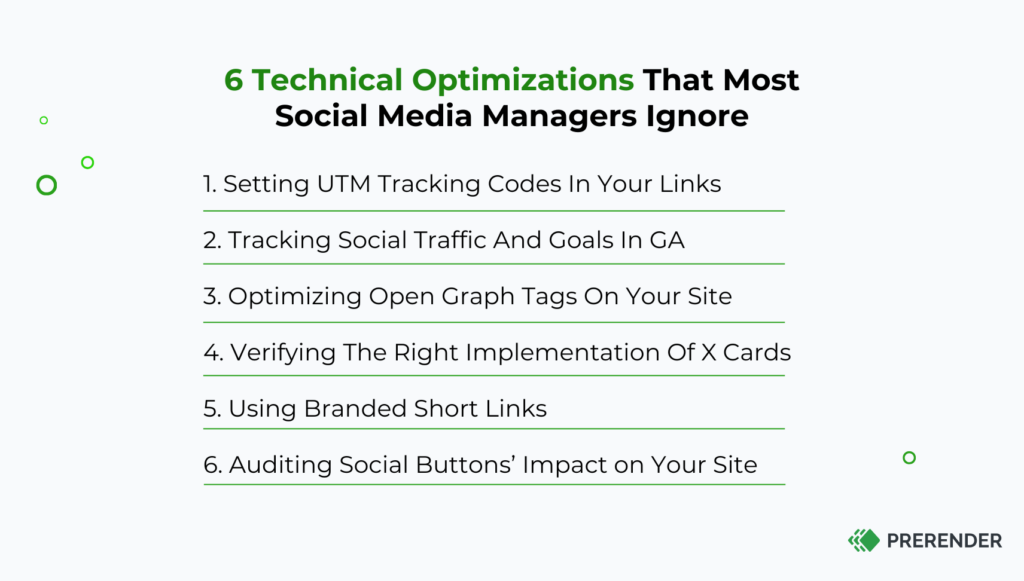
1. Setting UTM Tracking Codes in Your Social Links
Urchin Tracking Modules (UTM) are used to track traffic sources. Adding a UTM code to your target page URL makes it possible to pinpoint which social campaigns are generating the most traffic. The best thing about UTMs is that they can be tracked via Google analytics and are not affected by Facebook pixels or other third-party cookies.
A UTM link consists of 3 parameters:
- Source: To know where the traffic is coming from (search engines, social media, emails, etc.)
- Medium: To know what type of traffic you are getting (organic, paid, referral, etc.)
- Campaign: To know the target source or the specific campaign that generated the traffic (landing pages, free trial, CTAs, etc.)
Benefits of UTM Tracking Codes
Let’s now look at some of the benefits of adding UTMs to your social links:
- Identify your best-performing content on social media platforms
- Track visitor engagement from specific sources by studying time spent on target web pages
- Leverage conversion tracking to measure ROI
- Test different CTAs, headlines, and copy to find the best-performing version
- Cut down on low-performing content to optimize your advertising efforts
The most effective tool to generate a UTM link is Campaign URL Builder, which Google develops. You need to fill out four fields, and the UTM link will automatically generate.
- Website: The URL where you want traffic to land.
- Source: Your traffic source ( Facebook, Instagram, etc.)
- Medium: Whether it is organic, paid, or referral.
- Campaign name: It could be for testing CTAs, conversions, landing pages, etc.
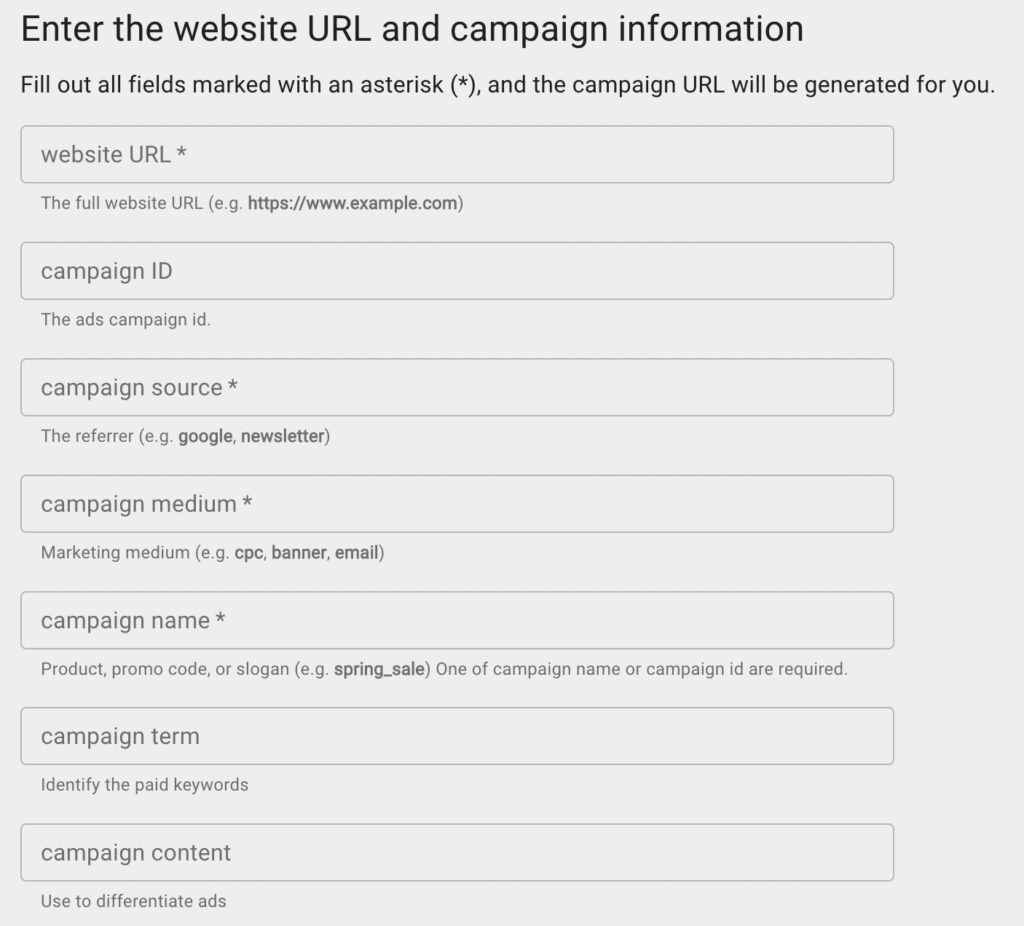
To get the most out of UTMs, you can even use them in your social comments to see which types of comments are getting the most conversion. It is also possible to check which social media groups, networks, and profiles are getting the most traction.
Using UTMs makes it easy to identify the best type of content and the best-performing platforms so that you can minimize ad expense and increase content creation ROI.
2. Tracking Social Media Traffic and Goals in Google Analytics
If we were told to use only one tool to track our social media traffic, we would choose Google Analytics. It is by far the best tool you can use to track your traffic sources and ROI and understand user behavior.
You can find your best-performing content, social media platforms, conversions by device and much more. It is also possible to see how new visitors perform compared to old visitors in order to determine engagement rates of recent social media campaigns.
After creating a Google Analytics account, setting up Google Tag Manager, and creating your analytics tags, Google Analytics will compile all traffic coming from social media into its reports – specifically, Acquisition > Social.

Inside the social report, Google Analytics displays results in a table that can be changed to view percentage, performance, pivot, comparison, and other formats, which allows you to analyze the data quickly.
4 Key Social Media Reports To Review In Your Analytics
Some of the most important social media reports you can view are:
- Overviews: provides an overall conversions report
- Conversions: tracks conversions from specific platforms
- Plugins: tracks social media button clicks for specific content
- Network referrals: identifies best-performing content from a particular platform
Another aspect of analytics that many new SEOs tend to ignore is goal setting. However, there’s only so much you can learn by observing the number of visits you receive. Instead, you can create specific goals to track that will provide the right context to make business decisions.
Google Analytics Goal Tracking
There are four types of goals you can track:
- Destination: tracks conversions from a specific source
- Time Spent: tracks time spent on a particular page
- Pages Visited: measures number of pages visited after the traffic landed on a target web page
- Activity: details particular actions taken by the traffic on a target page
Setting the right goals with the right logic can provide a better picture of how your SEO and social media content strategies are performing. For example, you can attribute a conversion to a specific landing page by tracking visits to a unique landing page only accessible after finishing a purchase.
3. Optimizing Open Graph Tags on your Website
Want to take full control over how your web pages are displayed when they are shared on social media? Adding Open Graph meta tags helps you do just that. Adding this meta tag, you can ensure that only specially-designated images from your blog posts are displayed when shared on social platforms.
Facebook, Twitter, LinkedIn, and other platforms support adding Open Graph tags, so you can decide which images are displayed when your content is shared. Just remember that the images you add will need to have specific dimensions or else a random image from the post could be displayed in its place.
- Facebook: 12000 X 630 Pixels.
- LinkedIn: 80 X 150 Pixels.
- Twitter: 300 X 157 Pixels, less than 1 MB size.
Other than image specifications, you need to consider some other Open Graph tag requirements to make sure you can control how posts are displayed on social media.
- Title: Ideally, you want to keep it between 60 to 90.
- URL: To distinguish multiple URLs to the same target page.
- Type: To define the type of content (articles, web pages, product pages, etc.)
- Description: Recommended to use up to 200 characters.
- Author: To promote the author’s name in the byline.
- Audio: To tag any audio file related to your content.
- Video: To tag any video file related to your content.
Here’s an example from the original Open Graph documentation:
<html prefix="og: https://ogp.me/ns#">
<head>
<title>The Rock (1996)</title>
<meta property="og:title" content="The Rock" />
<meta property="og:type" content="video.movie" />
<meta property="og:url" content="https://www.imdb.com/title/tt0117500/" />
<meta property="og:image" content="https://ia.media-imdb.com/images/rock.jpg" />
...
</head>
...
</html>
Related: Benefits of Using Open Graph Meta Tags for Social Media
4. Verifying the Correct Implementation of Twitter Cards
Using a Twitter card, you can go beyond the 140-character limit set by Twitter and give your audience more content to engage with. You just need to add a few lines of HTML code to your web page to ensure it is correctly implemented in the Twitter card.
You can add an image, video, or app and redirect your audience to a landing page using Twitter cards. You can also provide custom titles and descriptions and an enhanced mobile experience to your users.
You can hire a developer to add simple codes to your website or use WordPress plugins like JetPack and Yoast SEO to optimize your Twitter cards. Once it is done, run it through Twitter Card Validator. If you get any errors, resolve them before posting your content on Twitter.
Run A/B split tests to find the best-performing Twitter cards. You can check the analytics of your Twitter Cards from the Ads section of your Twitter dashboard. And don’t forget to add relevant CTAs to encourage your audience to click your links so that you maximize the traffic to your landing pages.
Related: How to Use Twitter Cards for Content Amplification
5. Using Branded Short Links to Share Content
It is essential to use a link shortener to avoid the long and cluttered URLs we get after adding UTMs. Link shorteners are also a great way to track your traffic source, especially when running multiple campaigns. But why do you need to use branded short links?
A branded link is a shortened version of your original URL or brand name. Using a branded short link instead of a generic one helps boost the SEO of your website and keeps your brand in front of your audience, leading to higher brand recognition and trust.
A branded link consists of your domain name, TLD, and the slug. To get branded short links, you must first register the perfect domain name that can be a short form of your brand name. Here are some examples:
- Pepsi – Pep.si
- Disney – Di.sn
- NYtimes – nyti.ms
6. Auditing Social Buttons’ Impact on Your Site’s Performance
Social share buttons are a great way to get more eyeballs on your content from people across the social media space. But, where should you put your social share buttons? Should you put them at the top or bottom of the post?
Here are some common social button placements:
- Top: Right below the author byline
- Bottom: At the end of a post
- Sticky Shares: Appears horizontally so your users can share the content at any point
The best way to find which solution is best for you is to perform A/B split testing to make sure you generate the most number of shares from your social buttons.
On the other hand, on some pages with a particular CTA, it might be a good idea to remove social share buttons altogether to get a higher click-through rate on your call-to-action in order to incentivize more focus on your messaging. As a reference, Taloon, a Finland-based eCommerce hardware store, got close to a 12% increase in its CTA click-throughs by removing its social buttons.
Wrapping Up
Although, as SEOs, our primary focus is always on search engines, we also need to be advocates for ensuring proper tracking and understanding of data and traffic coming to our websites.
In this sense, even though we’re not directly responsible for social media, there’s no denying that keeping our site’s presence on these platforms can be a great advantage in gaining backlinks and visibility. By optimizing the technical aspects of social media, we can create better attribution, better understand how different channels are affecting our metrics and create small changes that can generate a massive difference.
